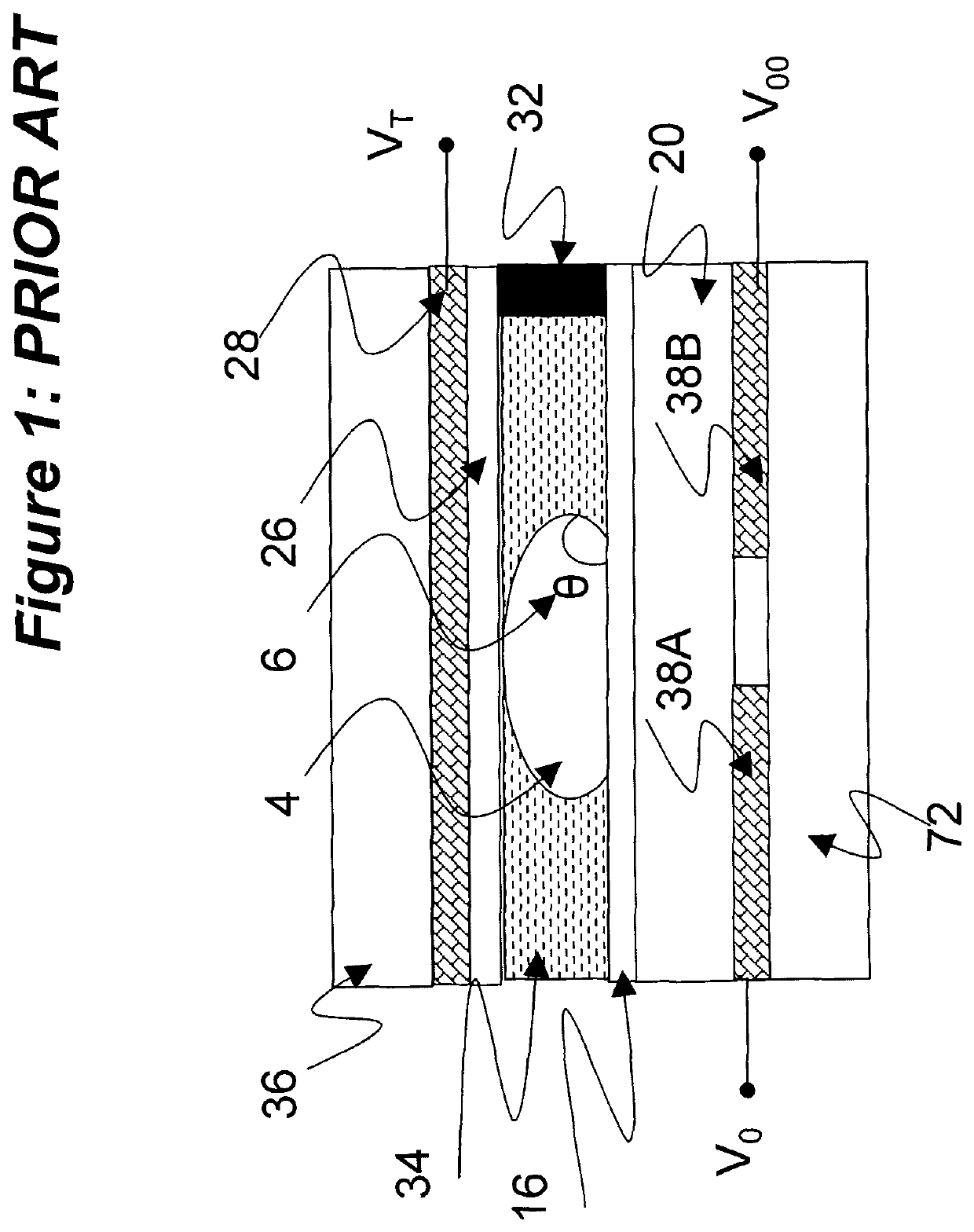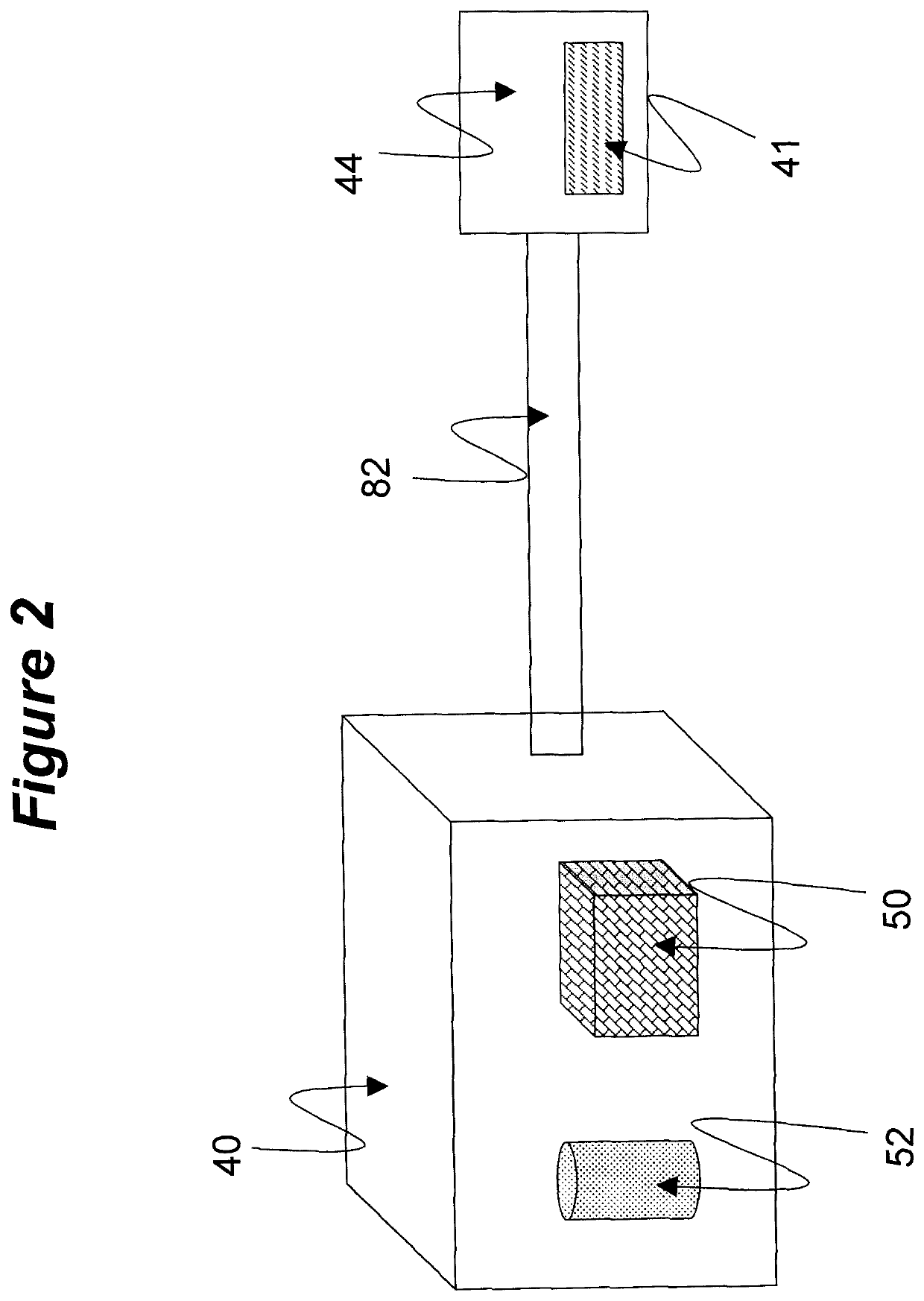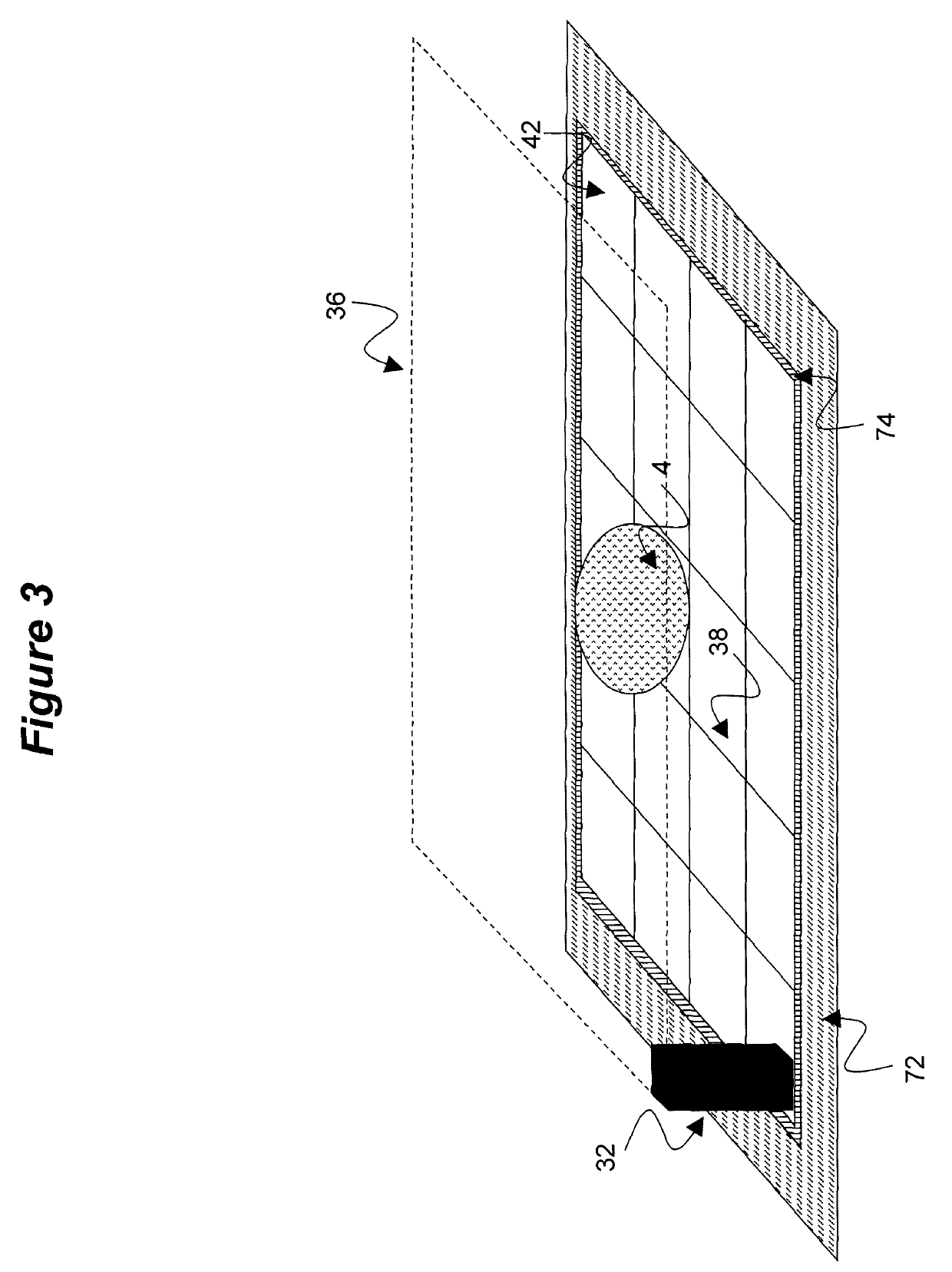Droplet microfluidic device and methods of sensing the results of an assay therein
a microfluidic device and droplet technology, applied in biochemistry apparatus and processes, laboratory glassware, instruments, etc., can solve the problems of not disclosing any circuit embodiment, hemostasis, and the cessation of blood loss from a damaged vessel, so as to simplify the system, reduce the cost, and reduce the amount of additional complexity
- Summary
- Abstract
- Description
- Claims
- Application Information
AI Technical Summary
Benefits of technology
Problems solved by technology
Method used
Image
Examples
first embodiment
[0111]FIG. 2 shows an exemplary assay measurement system according to the present invention. The measurement system includes two parts such as a reader 40 and a cartridge 44. The cartridge 44 may contain a microfluidic device, such as an AM-EWOD device 41, as well as (not shown) fluid input ports into the device and an electrical connection. The fluid input ports may perform the function of inputting fluid into the AM-EWOD device 41 and generating droplets 4 within the device, for example by dispensing from input reservoirs as controlled by electro-wetting. 15. As further detailed below, the microfluidic device includes an electrode array configured to receive the inputted fluid droplets.
[0112]The assay measurement system further may include a controller configured to control actuation voltages applied to the electrode array of the microfluidic device to perform manipulation operations to the fluid droplets. For example, the reader 40 may contain such a controller configured as cont...
second embodiment
[0173]This concept is illustrated in FIG. 10. According to the operation of the device according to this embodiment, an actuation pattern is applied to the element electrodes that would generally be sufficient to split the product droplet 4D (shown initially located at element electrode 38C) into two daughter droplets, to be located at element electrodes 38A and 38E. The sensor capability of the AM-EWOD device 41 may then be used to determine whether or not the splitting operation has successfully occurred. Accordingly, the result of the assay, i.e. whether the product droplet 4D is in a split-able or non-split-able state, may thus be determined. An advantage of the second embodiment is that a splitting test may be more sensitive than a movement test to whether a change in the properties of the product droplet 4D has occurred in accordance with the result of the assay. This method may thus be capable of detecting smaller quantities of the target substance in the sample droplet.
[0174...
fifth embodiment
[0182]In a variant of the fifth embodiment, the actuation function and sensor function of the AM-EWOD device 41 may be configured to operate in a feedback mode in order to implement a move operation. For example, an actuation pattern may be applied to move the product droplet 4D from its starting position (38A) to the neighboring array element 38B. This actuation pattern may involve, for example, de-actuating 38A and actuating 38B, such that the product droplet 4D moves from element electrode 38A to element electrode 38B. During the move operation the position of the droplet may be determined using the integrated sensor function at each of element electrodes 38A and 38B. Accordingly it may be determined when the droplet has reached element electrode 38B according to some criteria (for example by a measurement of the centroid position of the droplet, or alternatively by measurement of the position of the edges of the droplet). At this point element 38B may be de-actuated and element ...
PUM
| Property | Measurement | Unit |
|---|---|---|
| electro-wetting voltages | aaaaa | aaaaa |
| temperature | aaaaa | aaaaa |
| time | aaaaa | aaaaa |
Abstract
Description
Claims
Application Information
 Login to View More
Login to View More - R&D
- Intellectual Property
- Life Sciences
- Materials
- Tech Scout
- Unparalleled Data Quality
- Higher Quality Content
- 60% Fewer Hallucinations
Browse by: Latest US Patents, China's latest patents, Technical Efficacy Thesaurus, Application Domain, Technology Topic, Popular Technical Reports.
© 2025 PatSnap. All rights reserved.Legal|Privacy policy|Modern Slavery Act Transparency Statement|Sitemap|About US| Contact US: help@patsnap.com



